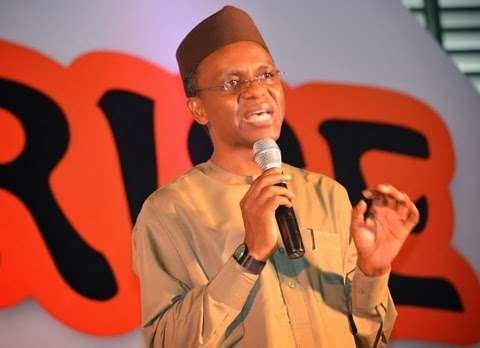Africa and Agenda 2063
Sheriffdeen Tella
How many African presidents know the existence of Agenda 2063? I will be surprised if there are more than 10 out of the 54 countries. More importantly, I would be surprised how many of the 10 have glanced through the document. More surprising would be the fact that most African ministers of Economic Planning might have heard of but not seen the document. That is the nature of African governments towards guided economic growth and development. But it is also typically African.
In the “Forward” to a 2016 publication of the United Nations Economic Commission for Africa entitled, “Planning for Africa’s Development”, it was clearly stated that “the role of planning in transforming the economies of the countries known as the Asian Tigers not merely attests to the utility of development planning but also raises questions about the conditions under which planning does or does not achieve its stated objectives.” The glaring success of the four Asian Tigers, Hong Kong, Singapore, South Korea, and Taiwan since the late 1960s, in terms of their industrialisation feat, has actually served as the impetus for other developing countries, particularly Africa.
However, the focus of concern by countries that wanted to follow in their footsteps was more on the route to development rather than the building blocks or ideological orientation. Hence, in the 1970s, many developing countries focused on export drive and import substitution industrialisation agenda. The Western world goaded these developing countries towards export drive by increasing the demand for raw natural resources and establishing businesses that focused on the extractive sector and promoting the doctrine of comparative advantage theory, emphasising the need for developing countries to concentrate on the production of agricultural raw materials and unprocessed mineral resources.
The issues of human capital development and national planning which formed the foundation of the development agenda of the Asian Tigers were underplayed. While the West pretended to be at war with the then Union of Soviet Socialist Republics ideologically, they were also busy exploiting the resources of the developing countries to meet the needs of their growing multinational companies in the Asian countries. The third catch phase besides import substitution and comparative advantage was technology transfer. The emphasis was that by allowing the multinational corporations to establish in your country, it would make it easy for the technology being used in production to be transferred to local labour.
While the technology transfer agenda worked in the case of the Asian Tigers and other Asian countries including Japan because of the established highly skilled manpower, it did not translate into reality in the case of Africa and other developing countries with poor educational systems and low literacy levels. That poor system and low level persist today despite the glaring advantages of having a highly literate society.
Economic planning, medium to long-term, is not new to Africa as it has been part of the system in some countries pre-independence. Countries like Ghana, Ethiopia, Kenya and Nigeria among others are known to have national plans from the 1950s or before. In most cases, the national plans were over-ambitious and depended on external financing that was never realised. Most often, the governments would not follow the plans as arranged while battling with domestic and external shocks.
The adoption of structural adjustment programmes of the World Bank/International Monetary Fund consensus by African countries in the 1980s further truncated the relevance of long-term economic planning in the economic management of the countries. Most African countries have since the end of SAP abandoned long-term planning for short-term rolling plans which invariably resulted in a lack of long-term vision, necessary for economic growth that culminates in sustainable development.
To encourage developing countries to return to long-term planning, the United Nations introduced a 15-year Millennium Development Goal at the beginning of this century, and that was succeeded by the current Sustainable Development Goals from 2015, which will end in 2030. The United Nations Economic Commission for Africa in Addis Ababa, Ethiopia in collaboration with the African Development Bank, took a queue from the UN main body’s action to fashion out a development Agenda for African countries tagged Agenda 2063, albeit, the agenda is owned by the African Union.
The importance of a country having an economic plan is underscored by the report of the aforementioned benefits derived by the Asian Tigers. Planning serves as a means to achieving sustainable economic development. The UNECA explained that it is “a systematic approach to identifying, articulating, prioritising and satisfying the economic and social needs and aspiration of a country within a given resource envelope.” The body recognised that the pathway to development in developing countries like Africa is fraught with some systemic challenges that require more than market mechanisms but the involvement of the state, which planning will expose and provide solutions to solving the problems.
The agenda is a 50-year continental plan that was adopted in January 2015 by the 24th African Union Assembly of Heads of State and Government. Couched within the context of Pan-Africanism and African Renaissance, the plan is a shared strategic framework based on inclusive growth and sustainable development. It addresses past injustices and projects the 21st century as the African century.
It embodies seven pillars with 20 goals that each African country must embrace to take the citizens out of poverty, promote human capital development in terms of quality education and healthcare, and, transform economies from primary sector dependent to industrialisation. According to the document, the main aim is to achieve, at the end of 2063, a continent with an entrenched and flourishing culture of human rights, democracy, gender equality, inclusion, and peace; prosperity, security and safety for all citizens; and mechanisms to promote and defend the continent’s collective security and interests.
Apart from the Agenda 2063 document, the UNECA provided subsector analysis to assist African countries in guiding them on ways to achieve some of the objectives. For instance, ways of mobilising domestic financial resources for the development and infrastructural development financing channels are provided in some case studies reports. How many African countries have availed themselves of the benefits of such a document remains guesswork.
There is no doubt that Agenda 2063 has some links with the SDGs or Agenda 2030. The former is expectedly broader in scope and continent-specific. It was expected that each African country would draw its country-specific national plan from the continental plan. Many African countries, even the big ones like Nigeria, have ignored the need for a kind of systematic economic growth and development provided by economic development plans. That is why developments have been haphazard.
The Agenda 2063 is in its second decade and the Agenda 2030, the SDGs, has less than six years to shut down. A preliminary assessment of the SDGs by countries shows that many African countries are lagging in achieving most of the 17 goals and 169 targets. Do the countries require incentives to achieve development goals that benefit their citizens?











